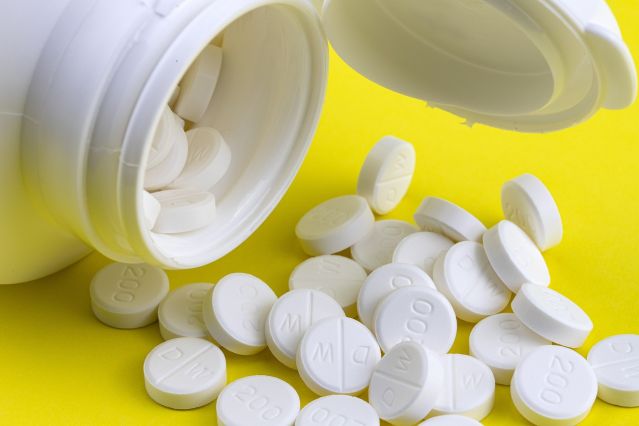Psychopharmacology
The Logic of Drug Names
Pharmaceutical firms are challenged to create distinctive and pronounceable names.
Updated July 9, 2024 Reviewed by Monica Vilhauer

New words and phrases enter the language in a variety of ways. Many begin life as slang terms (think “mewing” or “goblin mode”), or as shortenings of other words or phrases (as in “nepo baby” or “sus”). But a major source for new terms are corporations in general and the pharmaceutical industry in particular.
Many of the names coined by drug companies seem like bizarre concoctions generated by an alien species. Consider, for example, the new GLP-1 agonist drugs being marketed for type 2 diabetes and weight management. These include Adlyxin, Byetta, Rybelsus, Trulicity, Ozempic, and Victoza. Where on earth do such names come from?
Generic Versus Brand Names
Medications approved by the U.S. Food and Drug Administration receive a generic name as well as one or more proprietary brand names. As a result, hundreds of new coinages for medications appear each year in advertising, on prescription pads, and ultimately the shelves of pharmacies and medicine cabinets.
In 2023, for example, the FDA approved 55 new drugs. One of these was mirikizumab, the generic name for a treatment developed by Eli Lilly for ulcerative colitis. This is the drug’s international nonproprietary name (INN). However, it also has a brand name—in this case, Omvoh, under which it is sold in the U.S. Unlike generic names, brand names are capitalized, and companies register them for trademark protection.
The U.S. Adopted Names Council, which receives applications from pharmaceutical companies, assigns generic names to new drugs. The Council employs various criteria to ensure that the generic name is workable—not too long, for example, and distinctive enough so that it won’t be confused with other medications.
It may not be obvious, but a generic drug name consists of two parts: a prefix and a stem. The stem for mirikizumab is -mab, which refers to its production as a monoclonal antibody. Other stems include -opol, for beta blockers (such as bisoprolol and metoprolol), and -pril for ACE inhibitors (captopril and lisinopril).
The prefix of a generic name can also refer to a class of medication, but some are idiosyncratic. The commonly prescribed anticoagulant warfarin, for instance, has an acronym for its prefix. It stands for the Wisconsin Alumni Research Foundation, which supported the research that led to the drug's development.
Names by Design
Drug companies use marketing consultants to help them create brand names for their wares. These are typically two syllables or more in length, and the letters H, J, K, and Y are mostly avoided because they aren’t used in all languages that employ the Roman alphabet.
In addition to these constraints, a candidate name’s aesthetics and pronounceability are taken into account. Any names with negative connotations—in many different languages—are ruled out.
As a result, the process involves the generation and evaluation of dozens or even hundreds of candidate names. Trademark searches must also be conducted, and applications have to be filed with the U.S. Patent and Trademark Office. For all these reasons, creating an acceptable name is a complex process that can take a long time—several years, in fact.
Some brand names have connotations that are suggestive of their effects. Medications that treat erectile dysfunction, for example, include Viagra (Pfizer’s brand name for sildenafil). The name suggests “vigor,” “vitality,” and even “Niagara.” Levitra (Bayer’s name for vardenafil) calls to mind the mechanics of levitation.
In other cases, the name simply invokes positive associations. Ozempic is Novo Nordisk’s version of semaglutide—the popular weight loss medication. Its name calls to mind words like “Olympic” or “euphoric.”
But some drug names seem to break all the rules. Eli Lilly’s Taltz, approved for treating plaque psoriasis in 2016, doesn’t sound like much of anything. It is, however, much easier to pronounce than its generic name—another monoclonal antibody derivative with the formidable moniker ixekizumab (note the -mab stem).
A "Tall Man" Solution?
When naming drugs, a major concern is making certain that a new brand name isn’t similar to anything already on the market. This helps to explain the more exotic coinages that have begun to emerge from the naming process.
Almost inevitably, however, there will be issues. For example, the brand name Xanax, a sedative manufactured by Pfizer, could be confused with Fanapt (an antipsychotic), or Tenex (an ADHD medication), or Zantac (formerly used to treat heartburn). The Institute for Safe Medical Practices (ISMP) maintains a list of such look- and sound-alikes that includes hundreds of easily confused pairs.
One way to reduce confusion among similarly named drugs is to use Tall Man (better known as upper case) lettering in drug names. The ISMP recommends that one or more syllables in each of the problematic names be capitalized to make them more distinctive.
According to this scheme, the generic opioid hydrocodone could be rendered as HYDROcodone, while the look-alike and much more potent oxycodone could be written as oxyCODONE. Combining Tall Man lettering with boldface or the use of color has also been proposed.
Given that medical errors are the third-leading cause of death in America, efforts to differentiate confusable medications certainly seem warranted.
References
Cutler, Jasmine. (2022). Why are drug names so long and complicated? A pharmacist explains the logic behind the nomenclature. The Conversation.
Karet, G. B. (2023). Linguistic Analysis of generic-generic drug name pairs prone to wrong-drug errors for which tall-man lettering is recommended. Therapeutic Innovation & Regulatory Science, 57(4), 751-758.
Kelman, Brett. (2022). At US Hospitals, a Drug Mix-Up Is Just a Few Keystrokes Away. KFF Health News.
Larmené-Beld, K. H., Alting, E. K., & Taxis, K. (2018). A systematic literature review on strategies to avoid look-alike errors of labels. European journal of clinical pharmacology, 74, 985-993.




